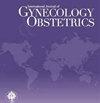Benefits of simulation on multidisciplinary management of severe pre‐eclampsia/severe eclampsia in 15 health districts in eastern Democratic Republic of Congo: A randomized educational trial
IF 2.6
3区 医学
Q2 OBSTETRICS & GYNECOLOGY
引用次数: 0
Abstract
ObjectiveThe purpose of the present study was to assess the benefits of simulation for advancing knowledge and assisting healthcare staff in optimization of procedures when managing severe pre‐eclampsia/eclampsia (sPE/E).MethodsA randomized educational trial was conducted with two groups: Group I received theoretical training, while group II received the same training along with simulation scenarios based on the management of sPE/E. The study involved 199 healthcare providers, including physicians, midwives, skilled birth attendants, and nurses. The study analyzed the percentage of correct answers on both the multiple‐choice questions (MCQ) and the objective structured clinical examinations (OSCE) to evaluate theoretical knowledge and clinical skills objectively.ResultsStatistically significant differences were found immediately after training between groups I and II, whose mean percentages were 65.0% (±11.2) versus 71.0% (±9.8) (在刚果民主共和国东部 15 个卫生区模拟多学科管理重度子痫前期/重度子痫的益处:随机教育试验
本研究的目的是评估在管理重度子痫前期/子痫(sPE/E)时,模拟在增进知识和协助医护人员优化程序方面的益处:随机教育试验分为两组:第一组接受理论培训,第二组在接受相同培训的同时,还接受基于重度子痫前期/子痫管理的模拟情景培训。研究涉及 199 名医护人员,包括医生、助产士、熟练助产士和护士。研究分析了多项选择题(MCQ)和客观结构化临床考试(OSCE)的正确答案百分比,以客观评价理论知识和临床技能。结果发现,第一组和第二组在培训后立即出现了显著差异,其平均百分比分别为 65.0% (±11.2) 和 71.0% (±9.8) (P < 0.001)。在统计学上,两组的正确答案百分比均有明显下降,并显示出培训后即时测试与培训后 3 个月测试之间的差异:第一组为 11.6%(±1.3),而第二组为 7.2%(±0.6)。第二组的 OSCE1 和 OSCE2 分数明显高于第一组(P < 0.001)。我们的目标是将这种方法用于降低刚果民主共和国南基伍地区现实生活中的孕产妇死亡率。
本文章由计算机程序翻译,如有差异,请以英文原文为准。
求助全文
约1分钟内获得全文
求助全文
来源期刊
CiteScore
5.80
自引率
2.60%
发文量
493
审稿时长
3-6 weeks
期刊介绍:
The International Journal of Gynecology & Obstetrics publishes articles on all aspects of basic and clinical research in the fields of obstetrics and gynecology and related subjects, with emphasis on matters of worldwide interest.

 求助内容:
求助内容: 应助结果提醒方式:
应助结果提醒方式:


